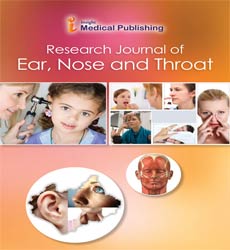Post headshake nystagmus: Further correlation with other vestibular test results
Abstract
Statement of the problem: Head shake nystagmus (HSN) is common in patients with vestibular disorders. In recent years, a lot of studies have been published regarding the origin, sensitivity, and specificity of this test. Previous studies showed significant correlation between HSN and canal paresis. Limited reports emphasized how HSN correlates with more recently tests for vestibular function evaluation in dizzy patients. The Video – head impulse testing (vHIT) evaluates the high frequency (velocity/acceleration) vestibular function. HSN is thought to relate to high frequency vestibular function. Vestibular evoked myogenic potentials (VEMPs) evaluate the otolith function. The purpose, in this study, is to evaluate the correlation between HSN and unilateral weakness on caloric testing , high frequency (velocity/acceleration) vestibulo- ocular reflex (VOR) function on video head impulse testing (vHIT) and otolith function determined by vestibular evoked myogenic potentials (VEMPs), both cervical and ocular .Methodology & Theoretical Orientation :A retrospective study of all patients (n=1499) who underwent complete vestibular function testing at the University Health Network Center for Advanced Hearing and Balance Testing from 2016 to 2019 was performed . Demographic data, clinical diagnosis, results of Video- nystagmography, vHIT and VEMPs were evaluated. Findings: 101 patients (6.7%) had HSN. Vestibular test abnormalities were more common in patients with positive HSN. The sensitivity of HSN compared to other vestibular testing appeared low. HSN however demonstrated a high specificity rate. Conclusion & significance: HSN is likely more complex in its generation than caloric- induced nystagmus, rendering to more variables within the vestibular system. HSN might provide clinicians with additional information concerning high frequency VOR function involving semicircular canal and otolith function.
Open Access Journals
- Aquaculture & Veterinary Science
- Chemistry & Chemical Sciences
- Clinical Sciences
- Engineering
- General Science
- Genetics & Molecular Biology
- Health Care & Nursing
- Immunology & Microbiology
- Materials Science
- Mathematics & Physics
- Medical Sciences
- Neurology & Psychiatry
- Oncology & Cancer Science
- Pharmaceutical Sciences
